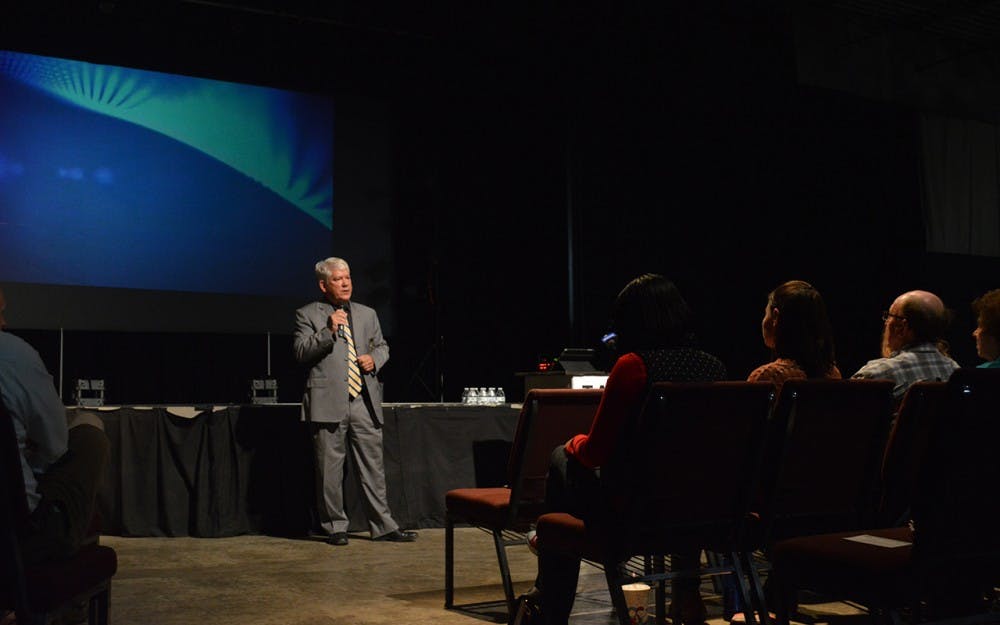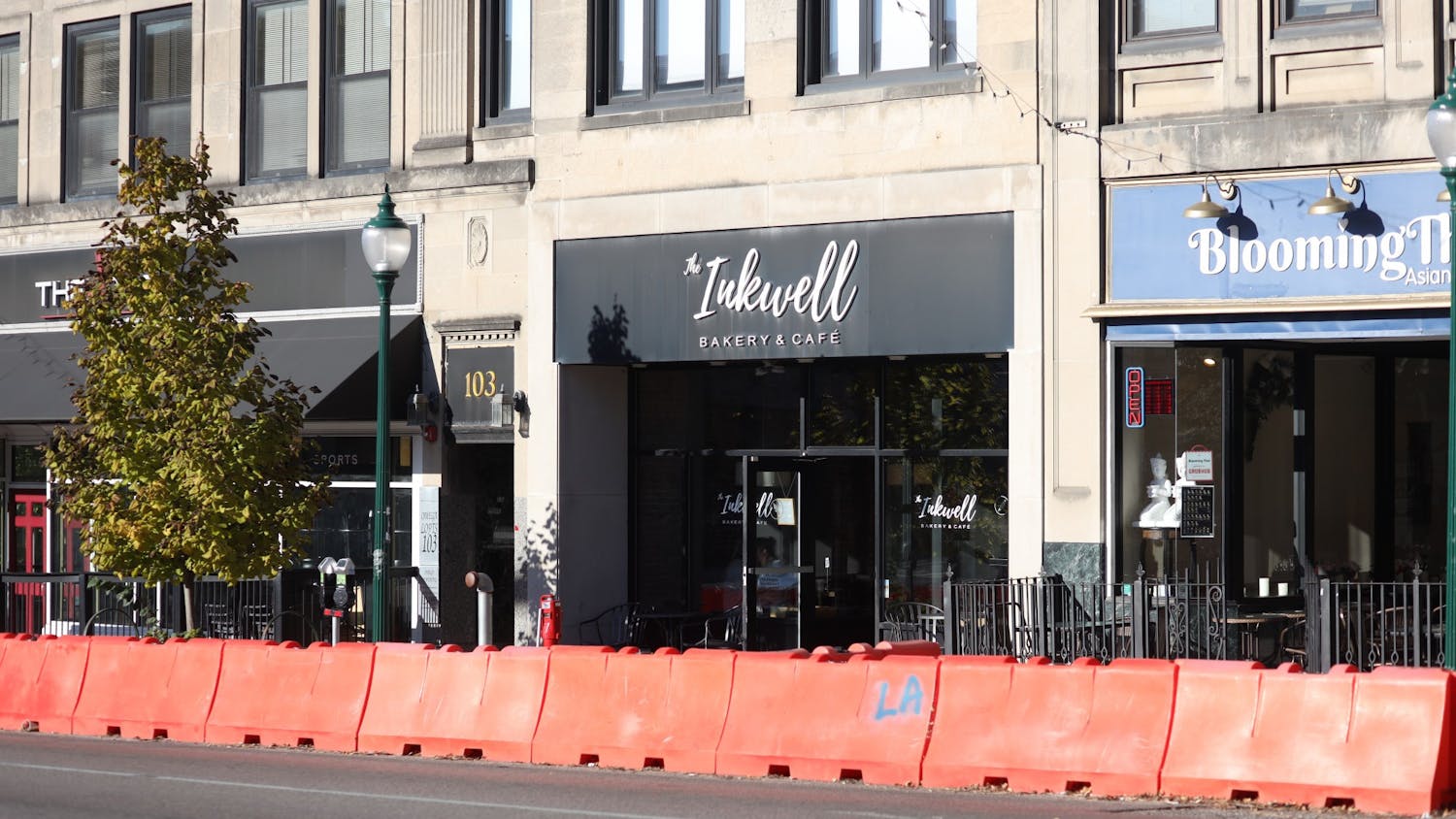More than 50 people gathered at The Warehouse at 1525 S. Rogers St. in Bloomington. They were talking as a part of Take Back Your Town, an event designed to discuss opioid addiction and solutions to the prevalence of drugs in Bloomington.
“We don’t think it happens in our neighborhood,” Director at Meadows Hospital Pete Link said. “But guess what, folks? It’s here.”
Link was one of several experts who spoke at the event to educate people on mental health, addiction and legal concerns.
Monroe County Sheriff Brad Swain said, with the construction of I-69, the number of drugs in the city of Bloomington is only going to grow as time passes. Swain said events like this will help to educate people on the situation in Bloomington.
The organizer of the event, Karen Little, said she did not envision Take Back Your Town as a one-time thing, but rather as a continual conversation about drug addiction. One in seven people suffer from addiction, and there needs to be a dialogue about it, Little said.
“Together we can take our town back from addiction,” Little said.
Many of the speakers had stories of addiction, either personally or in their families. Link said his mother was an alcoholic for years until she found service in Monroe County that could help with her addiction. He said addiction happens to everyone and is not an issue for only homeless or poor people.
“This doesn’t just affect the homeless,” Link said. “It affects us all.”
Brandon Drake from Keystone Interventions is a drug and alcohol counselor, and he said he experiences addiction through his work.
“I see this stuff every day,” Drake said. “I see this on a ground level.”
Drake said he remembered a few weeks ago when he was called and asked to check up on a former client of Keystone. That former client was found dead at his computer from a drug overdose.
Drake said his own path to drug addiction began when he was 14 years old. He had a headache and reached into his mother’s medicine cabinet and pulled out some pills with an orange label which read “may cause drowsiness.” Drake said he ignored the warning and swallowed the tablets.
“I took two of those tablets, and it was over,” Drake said.
Signs of addiction were also a topic of discussion. Drake said some signs include increasing isolation, anxiety, itchiness and exhaustion. Drake said he sees these in his clients, and some of those people try and pretend their problems are not related to the addiction, but Drake said he knows the truth.
“I did dope,” Drake said. “I know.”
Saul Kane, a Bloomington resident and sobriety coach, said he loves Bloomington but knows the city has a real problem.
“We are in the middle of a full-fledged epidemic,” Kane said.
Kane is 11 years sober after living a life that he said involved acid, pills and weed. He said his life has helped direct his work as a sobriety coach and a parent.
“I am blessed with a 15-year-old boy who has not chosen the same path as his father,” Kane said.
One of the best ways to beat addiction is to be present, Kane said. For Kane, being present means being with his son and spending time with his family.
When asked if schools could be helpful in the fight against addiction, Kane said he saw schools as a help but not the focal point of combating drug addiction.
“Schools can help, but prevention starts at home,” Kane said.
TBYT is just the start of the conversation and in helping those addicted to drugs and preventing future addiction, but it is an important first step, Kane said.
“This is my favorite place in the world, but we have a problem,” Kane said.




